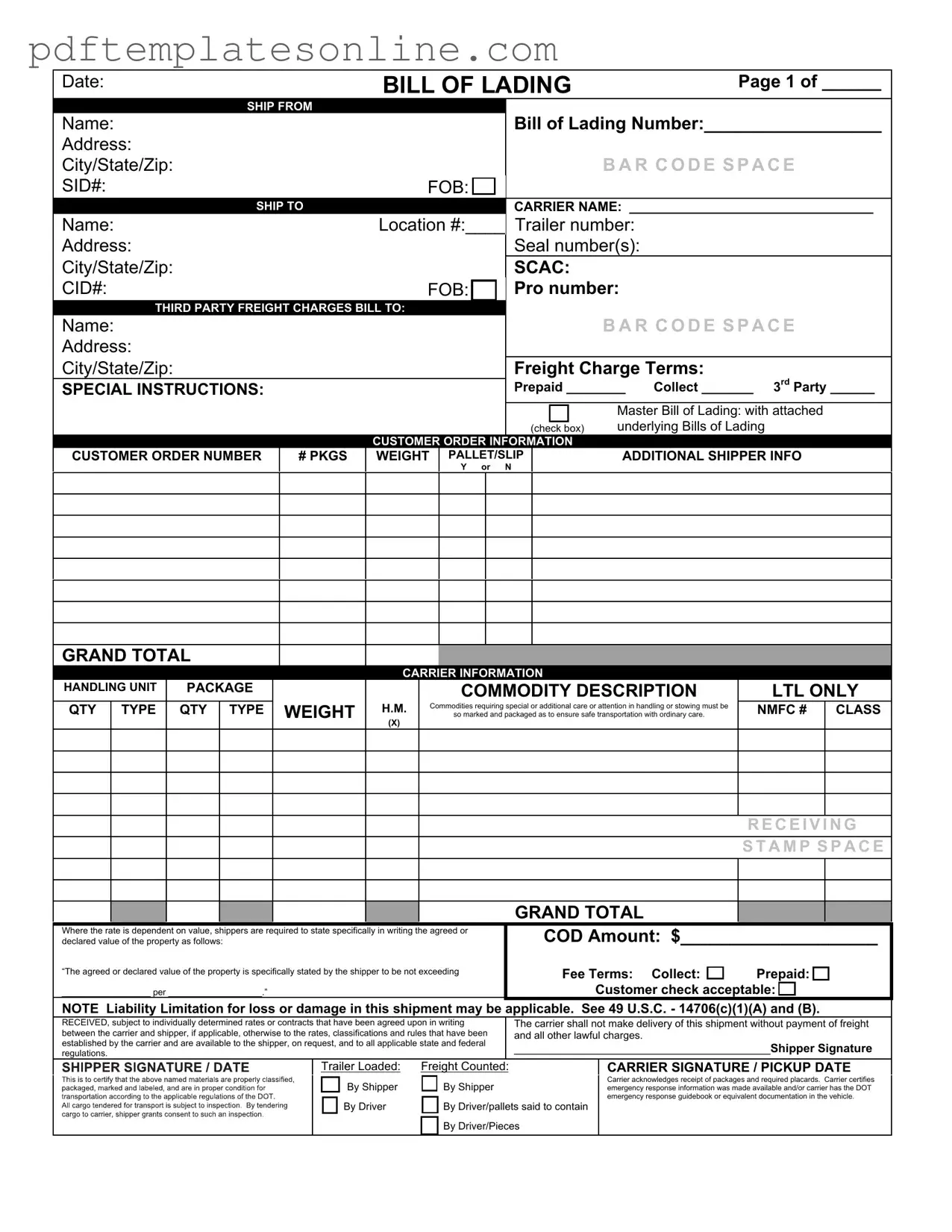Completing a Bill of Lading with a Supplement form requires careful attention to detail. Many individuals make mistakes that can lead to complications in the shipping process. One common error is providing inaccurate information regarding the consignee's address. If the address is incorrect or incomplete, it can result in delays or misdelivery of the shipment.
Another frequent mistake is failing to specify the correct shipping terms. The shipping terms dictate the responsibilities of both the shipper and the consignee. Omitting this information can create confusion and disputes over liability and costs. It is essential to clearly outline whether the shipping is prepaid or collect.
People also often overlook the importance of detailing the contents of the shipment. A vague description can lead to misunderstandings about the nature of the goods being transported. This lack of clarity may cause issues during customs inspections or affect insurance claims in case of damage or loss.
Furthermore, neglecting to sign the Bill of Lading can invalidate the document. A signature confirms that all parties agree to the terms outlined in the form. Without a signature, the document may not be legally binding, leading to potential legal complications.
Another common error involves not providing adequate information about the weight and dimensions of the shipment. Inaccurate weight can lead to incorrect freight charges and may even result in penalties from the carrier. It is crucial to ensure that all measurements are precise and reflect the actual shipment.
Lastly, many individuals fail to keep a copy of the completed Bill of Lading with a Supplement form. Retaining a copy is important for record-keeping and can serve as proof of the terms agreed upon. Without this documentation, resolving any disputes that may arise later can become significantly more challenging.
